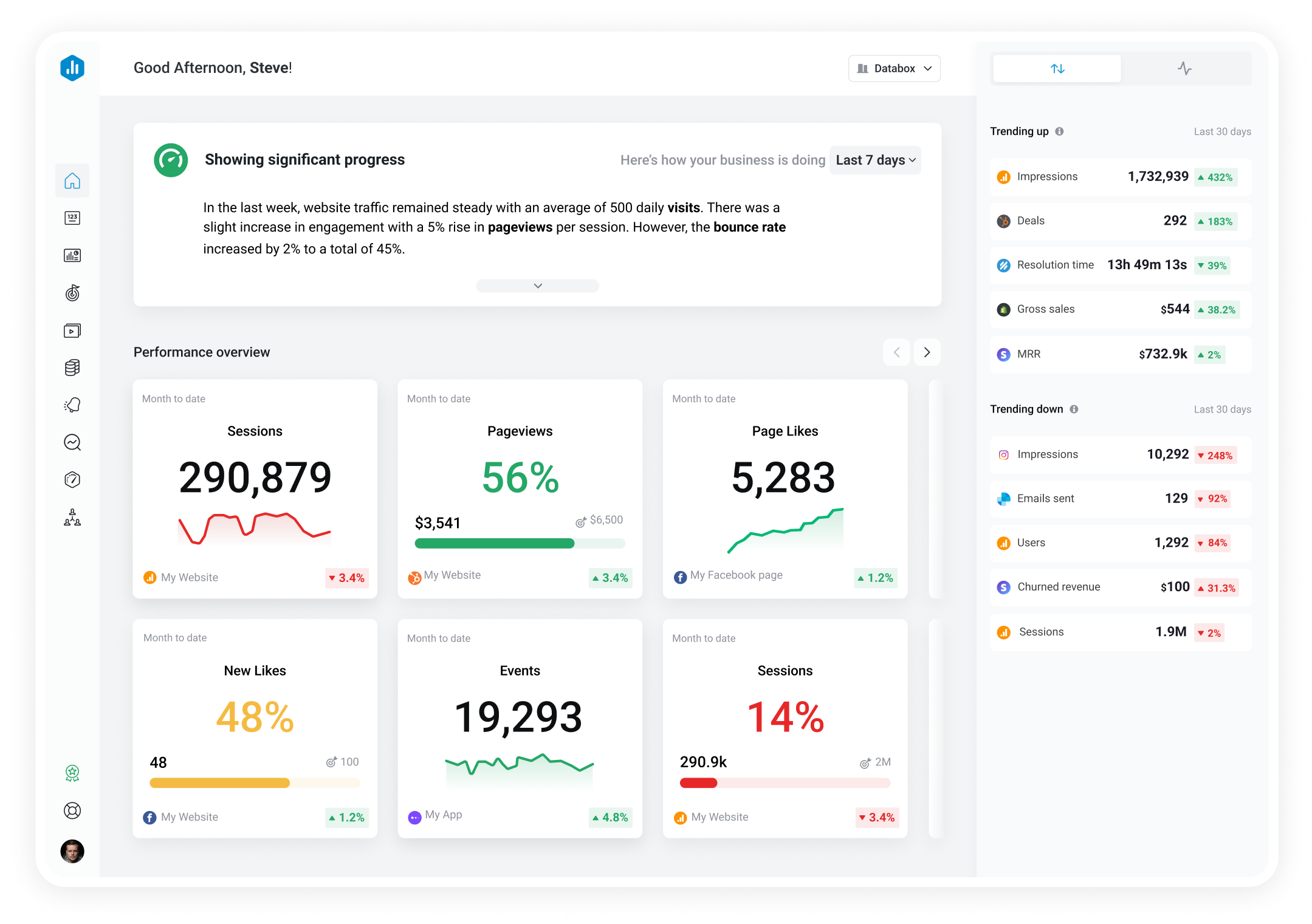Track all of your key business metrics from one screen
GET STARTED
 Shopify
Total sales by New vs Returning Customers
Shopify
Total sales by New vs Returning Customers Equates to Gross Sales - Discounts - Returns + Taxes + Shipping Charges during the specified Date Range split up by New vs Returning Customers.
With Databox you can track all your metrics from various data sources in one place.
Databox is a business analytics software that allows you to track and visualize your most important metrics from any data source in one centralized platform.
To track Total sales by New vs Returning Customers using Databox, follow these steps:
 Goals
Goals Scorecards
Scorecards Metric Digest
Metric Digest Metric Builder
Metric Builder Data Calculations
Data Calculations Performance Screen
Performance ScreenShopify dashboard template which will give you insights and a complete control over your Shopify store.

Use this Shopify advanced report to share high-level and in-depth metrics of your ecommerce store performance. Present key metrics like Orders, Net Sales, New Customers, and more.

Shopify metrics in Databox are Event type metrics and Databox obtains the relevant data based on calculations of data for the specific event entity, such as an Order. Each entity received via the API will be stored in our database as a separate entry and each entry will have its own timestamp associated with it – the moment the event occurred. As a consequence, in cases when the Order that occurred in the past is edited, changed, or deleted in the Shopify User Interface after it has already been completed and synced to Databox, Databox cannot report on such historical data changes, which will result in discrepancies when data from Shopify is compared to values in Databox for the past Date Range.
Shopify can distinguish between returning and new customers differently in their User Interface than Databox can from their API, therefore the data discrepancy might be present for this metric in the following case.
Databox obtains data on the current state of a customer, so if the customer had never placed an order before and then placed two separate orders one after the other in the selected Date Range, Databox sees it as a ‘Returning’ customer with value 2 (Orders) present in the API. This would then indicate that both these orders were made from a ‘Returning’ customer, which is not technically correct since the first order made by the customer should be counted as made by a ‘New’ customer.
Hence, in Databox the value for the ‘Returning’ dimension will be higher and the value for the ‘New’ dimension lower than in the Shopify User Interface when the new customer is making multiple orders right after their first purchase.
